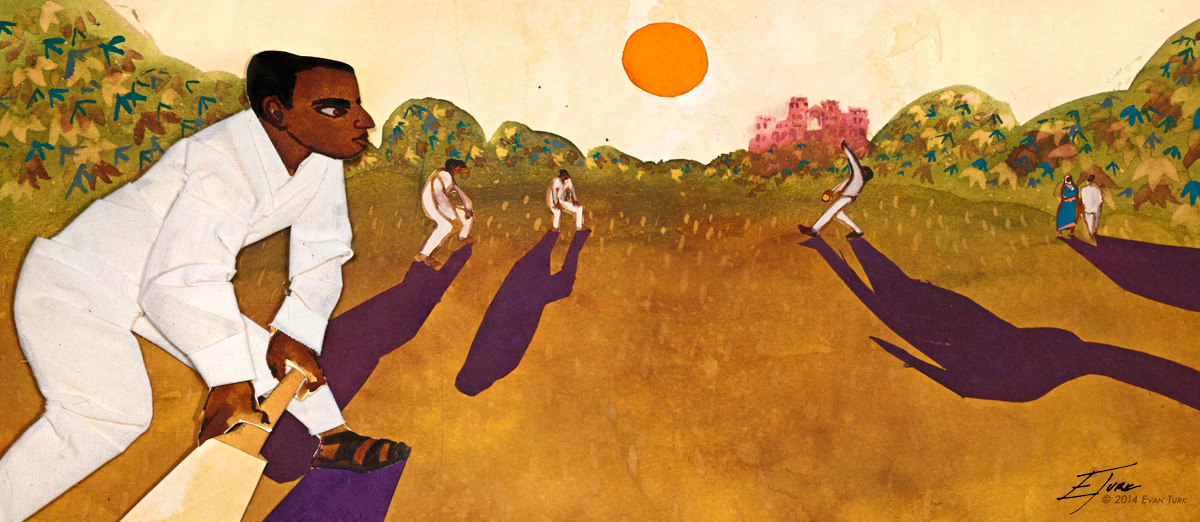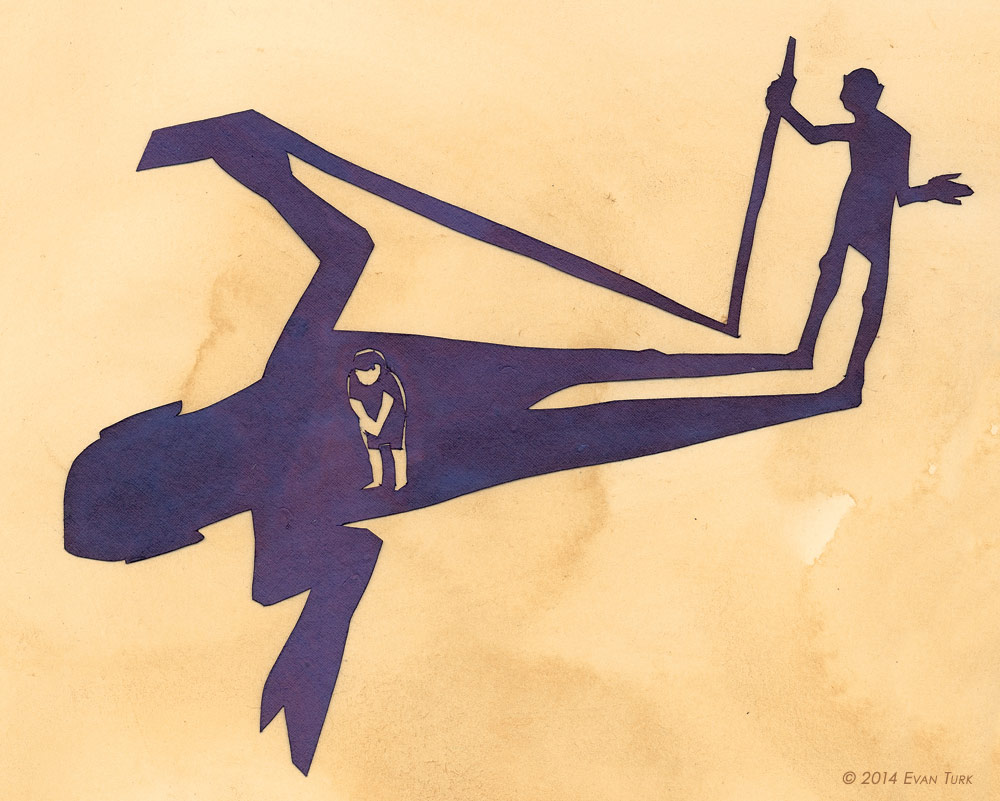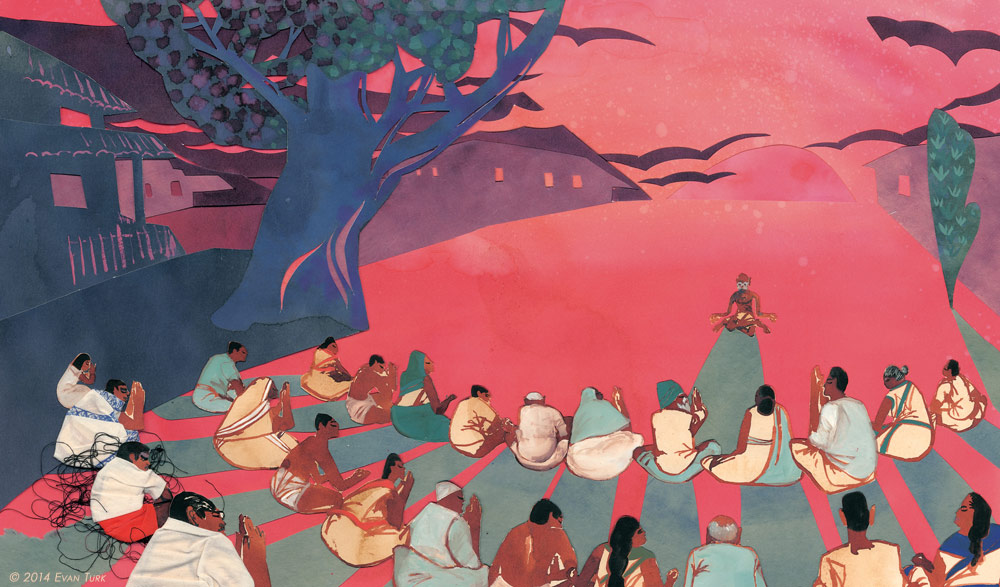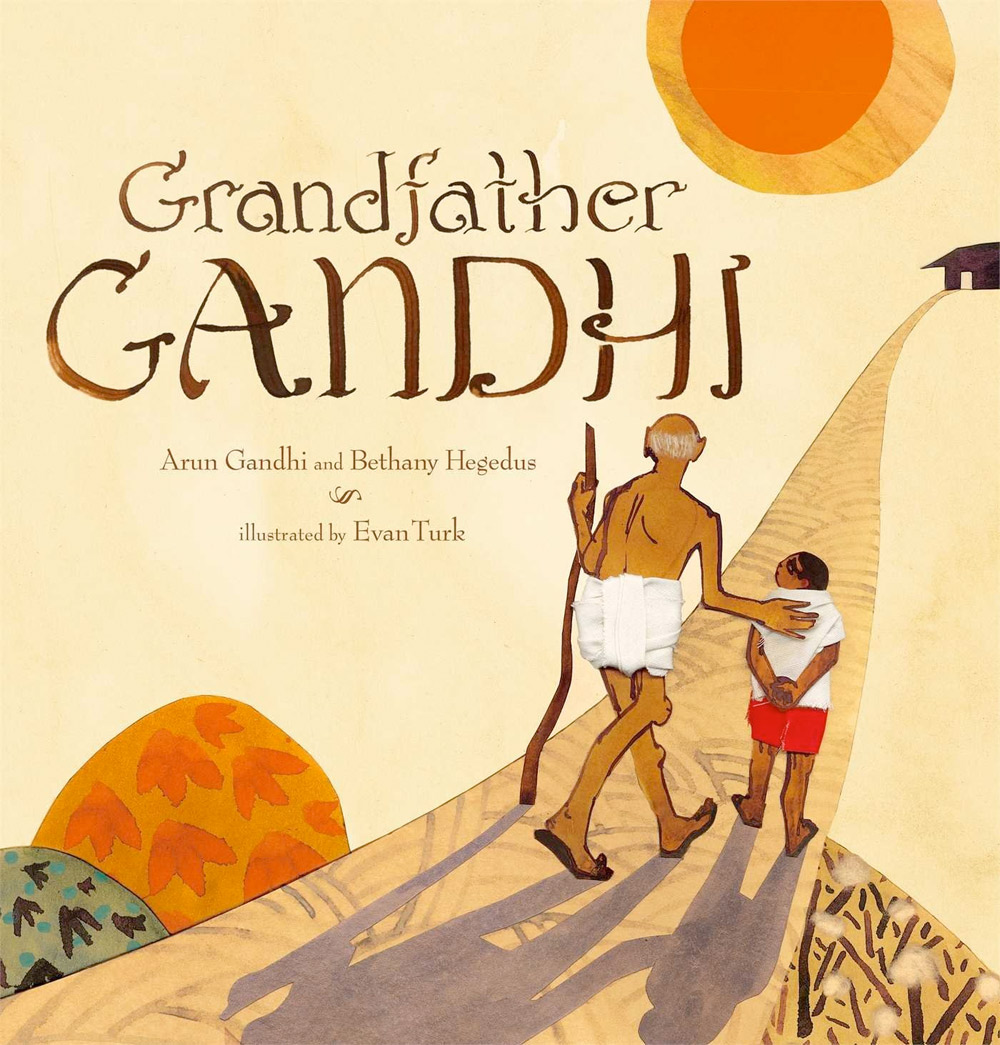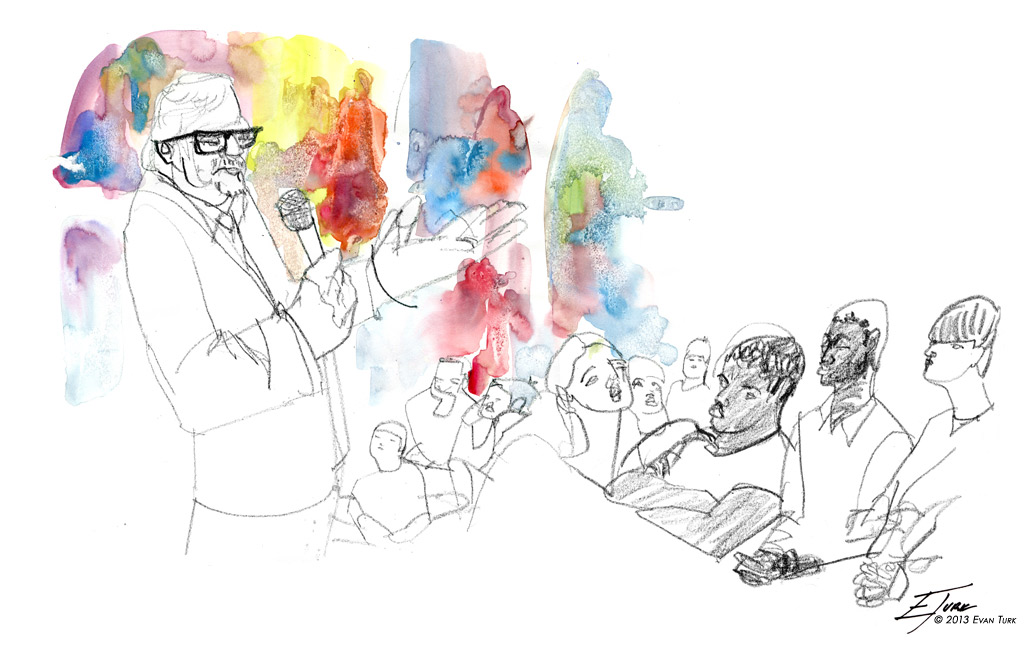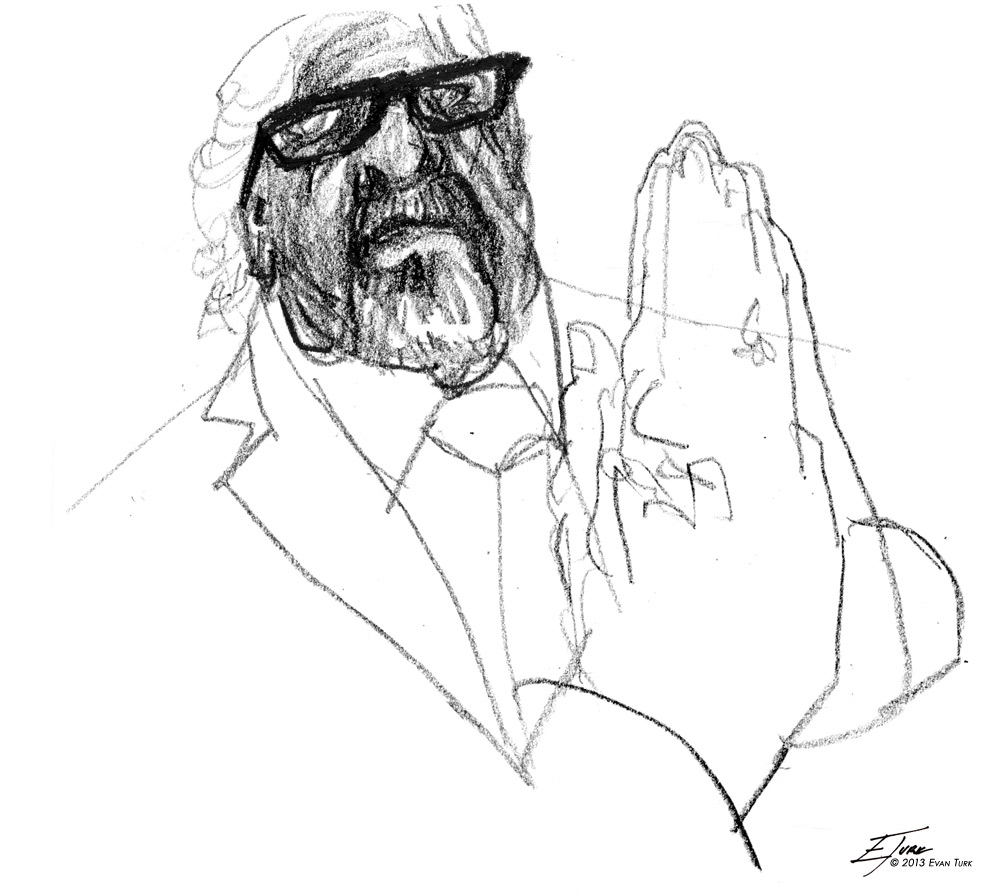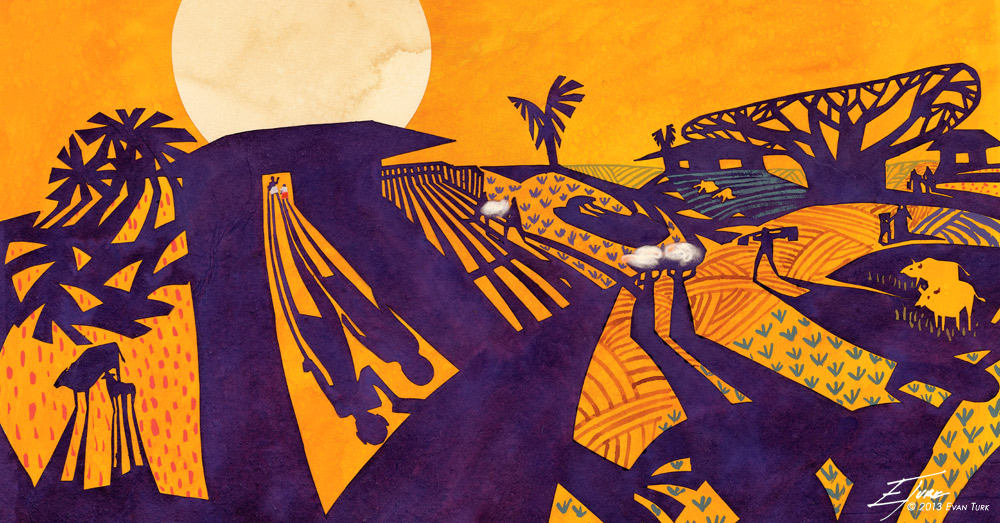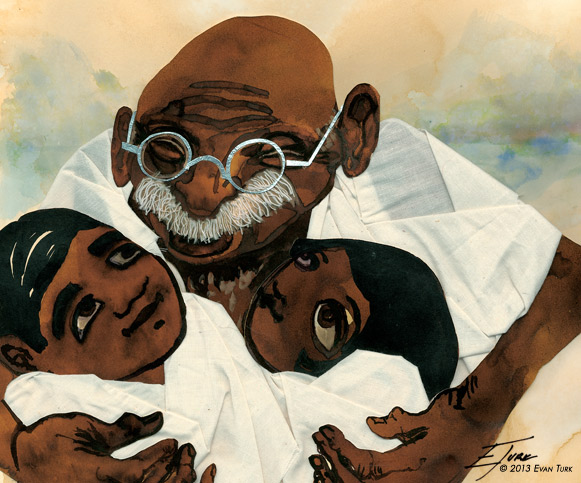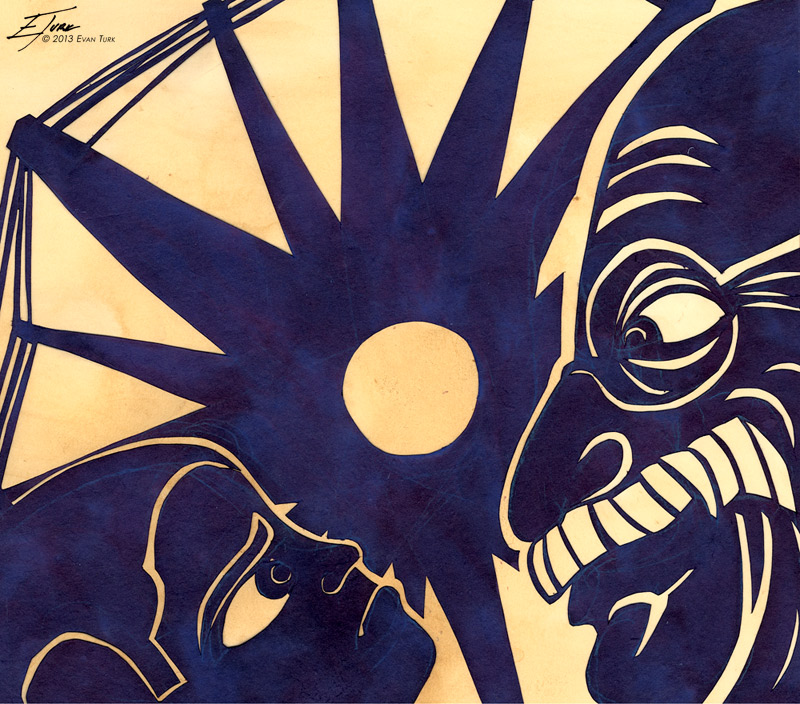With the
Grandfather Gandhi publicity train out of the station, I thought it would be fun to share some of the preparatory work and drawings from the very early stages of the book! We have been receiving wonderful reviews so far, even being named as
a possible Caldecott 2015 book by Betsy Bird over at Fuse 8, who does annual predictions for the Caldecott/Newbery awards. She also wrote
a beautiful review of the book, and really understood everything Bethany, Arun, and I wanted the book to do. So gratifying!
Once I had been offered a chance to illustrate the book, by Ann Bobco
and Namrata Tripathi at Atheneum/Simon & Schuster, they asked to see some samples of how I
would illustrate the book and the characters.
Above were the first character sketches, where I played around with the idea of using fabric and thread in the illustrations as a way of referencing the spinning wheel in the story, and Gandhi's political movement for India to free itself from Britain by spinning their own cotton thread and fabric, instead of submitting to high British taxes.
This idea then became a major symbol throughout the book, with the transformation of the raw unruly cotton into useful yarn mirroring young Arun learning to channel his anger.
After I had been given the okay to illustrate the book, it was time to research and search for things in the manuscript to emphasize in the art. In notes on the margins, the idea of shadows and spinning as symbols throughout the book came out.
The idea of shadows showing Arun's emotional state throughout the book, came out of the thumbnail in the upper right-hand corner of the manuscript, with Arun literally standing in his grandfather's shadow (which ended up in the final book, too).
I then had a lot of fun playing around with colors, shapes, and patterns from Indian miniature paintings, textiles, and shadow puppets, to figure out the final look of the art. It's interesting for me to look back and see which things made the cut (the fabric, shadows, colors, etc...) and which things didn't (namely the patterned sky I seemed very fond of in the beginning).
I wandered around the city picking drawing, and working out different ideas. In the drawing above, I was at the Bronx Botanical Garden, studying how plants were depicted in Indian miniature paintings.
I even came across a man on the subway who looked exactly like Gandhi (above)!
The sketches got closer to the final look of the book as I started
playing around with tea-staining the paper (with 100% "genuine" Indian
chai! The final collages do smell nicely spiced...).
I was also able to see how the warm background enriched the already vibrant colors in the concentrated watercolors.
Finally, everything came together into the finished collage illustrations for the book! What an amazing project to work on. You can read more posts about the art in this book at the official site, GrandfatherGandhi.com, here:
The Art of Grandfather Gandhi


